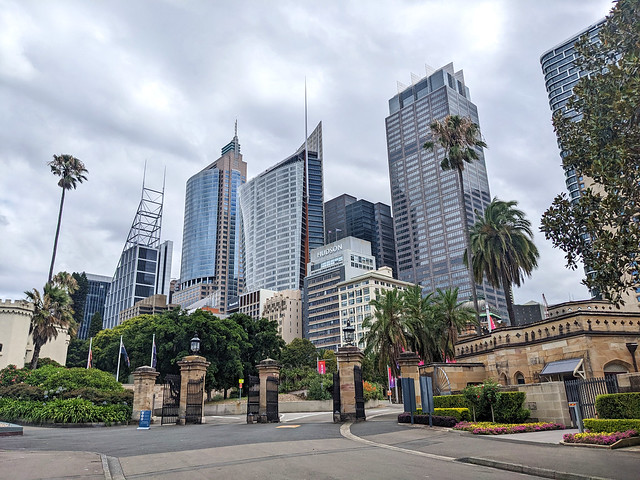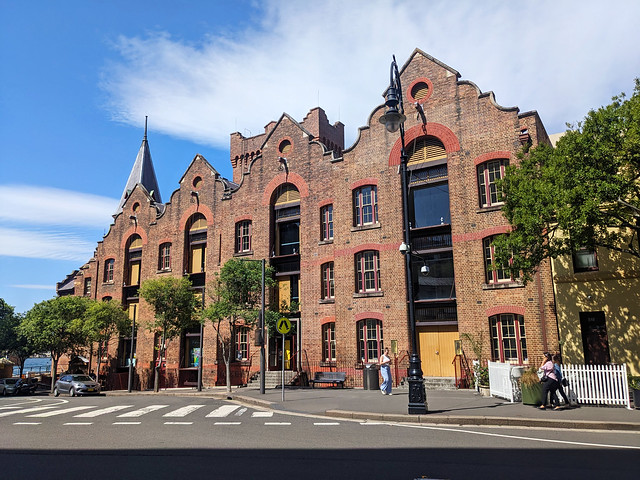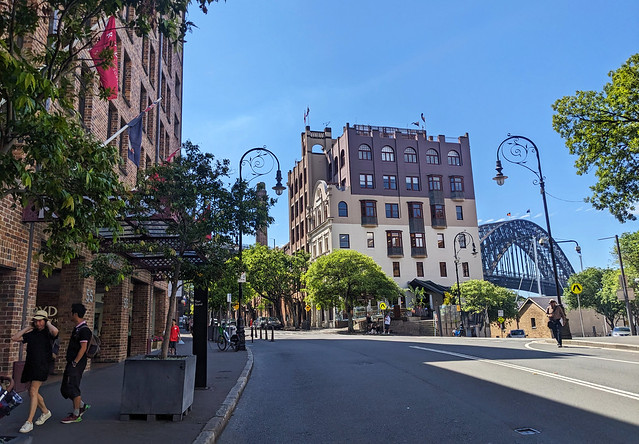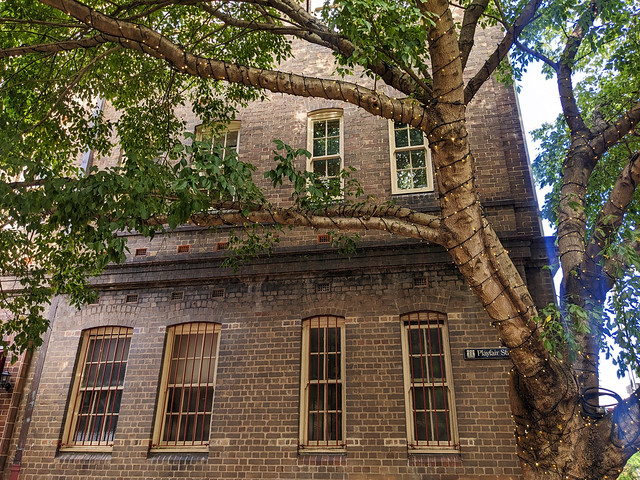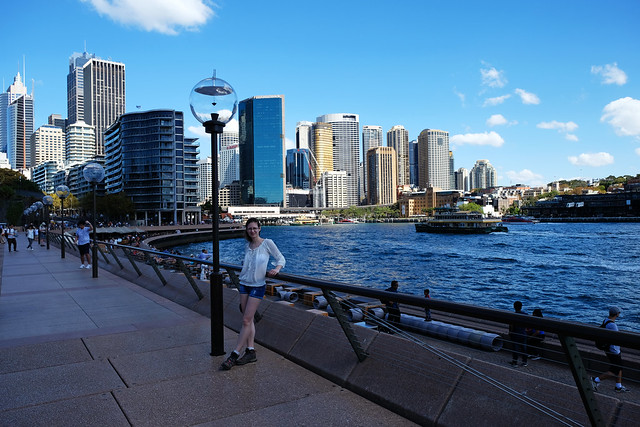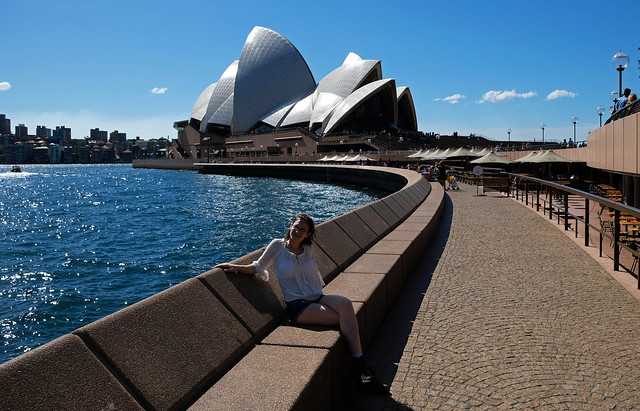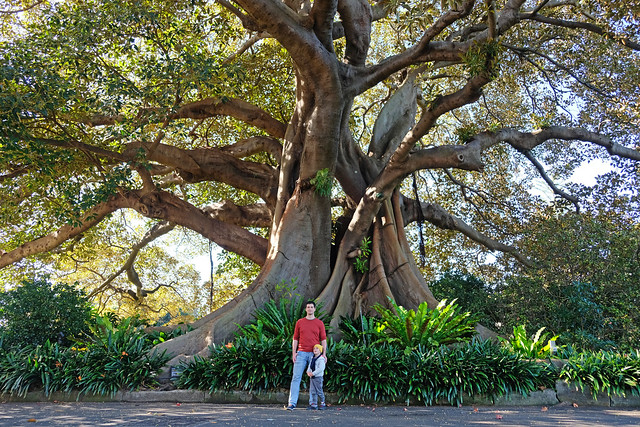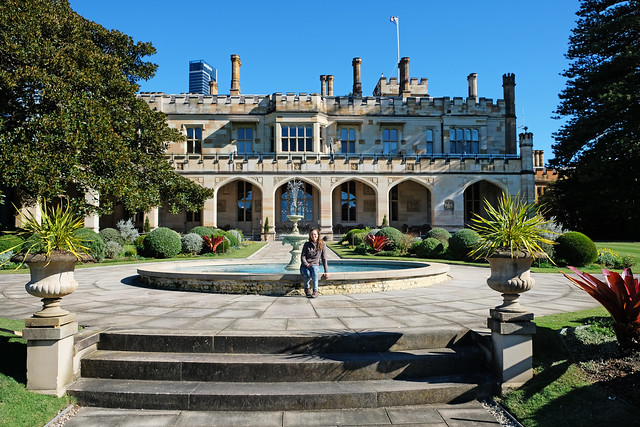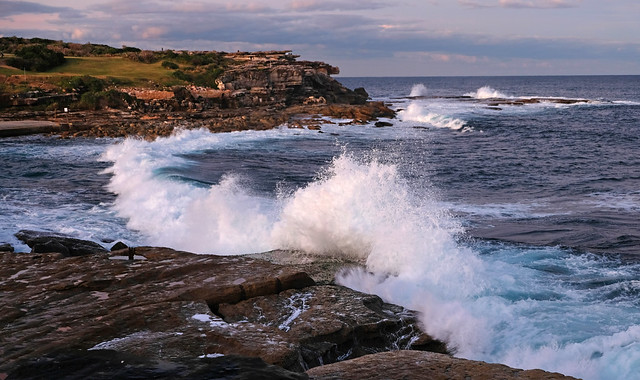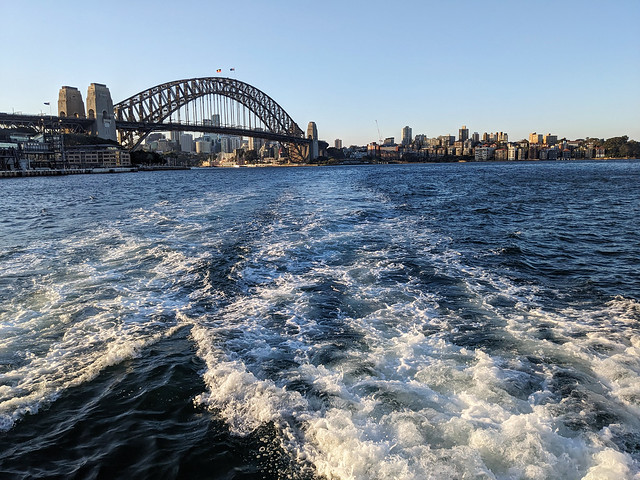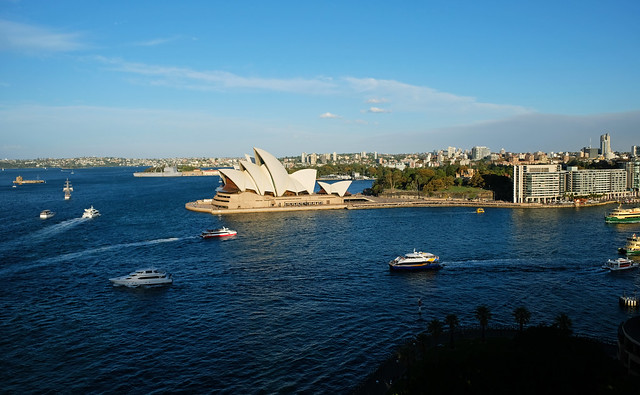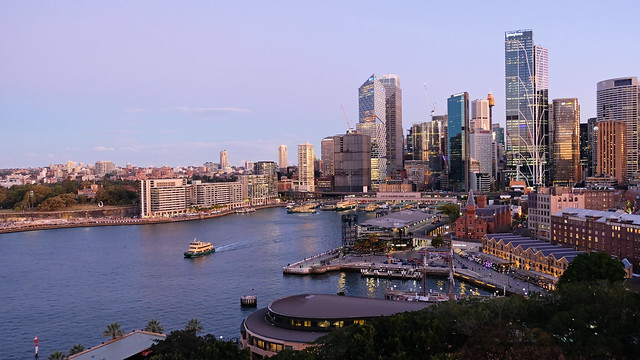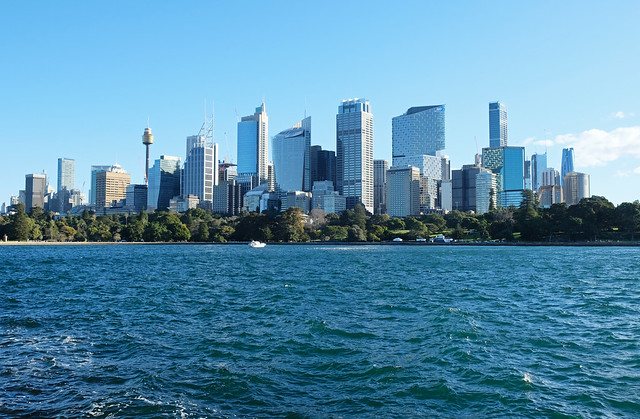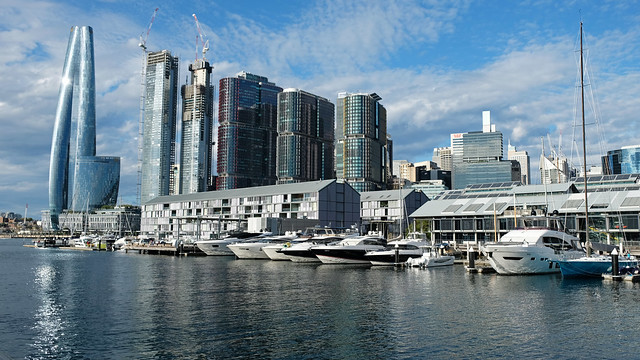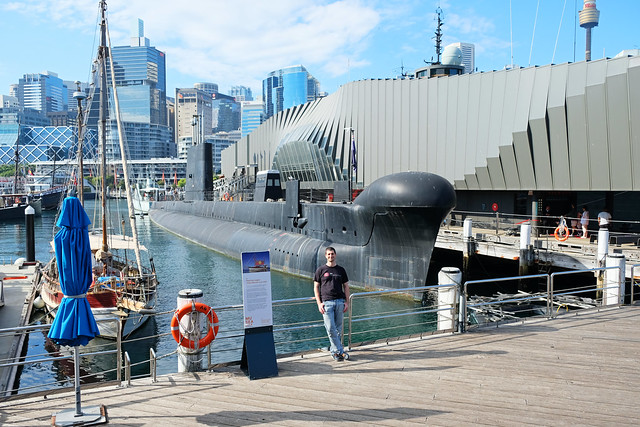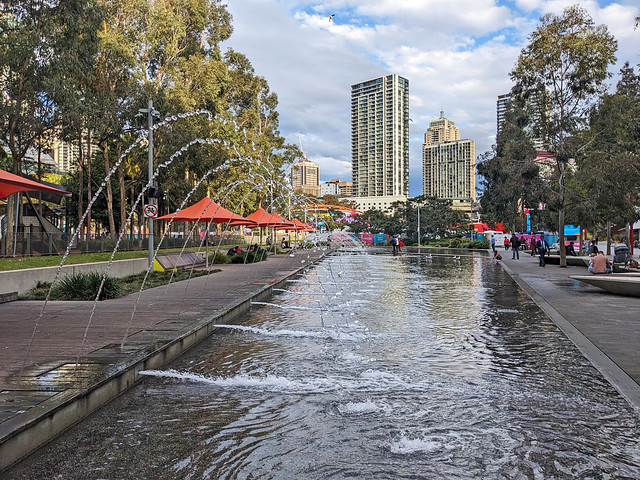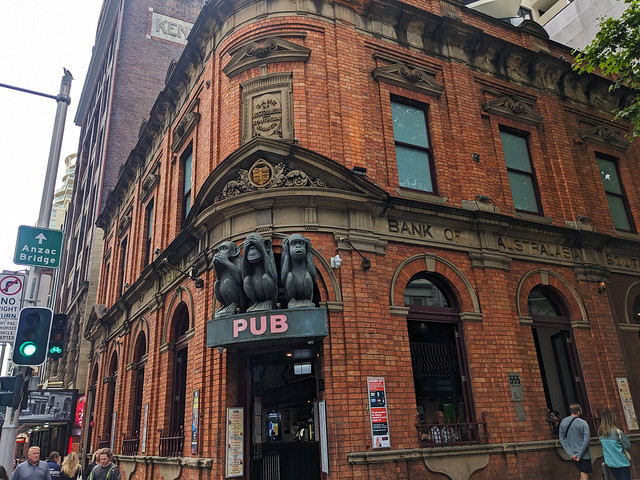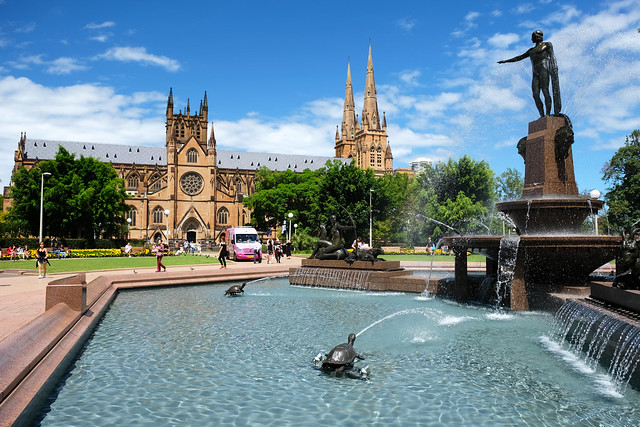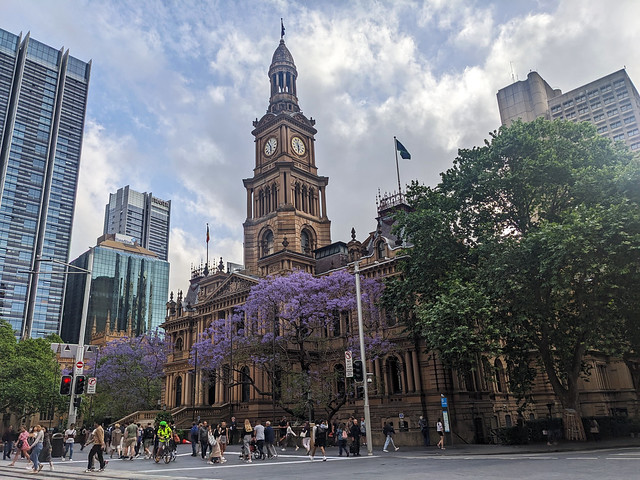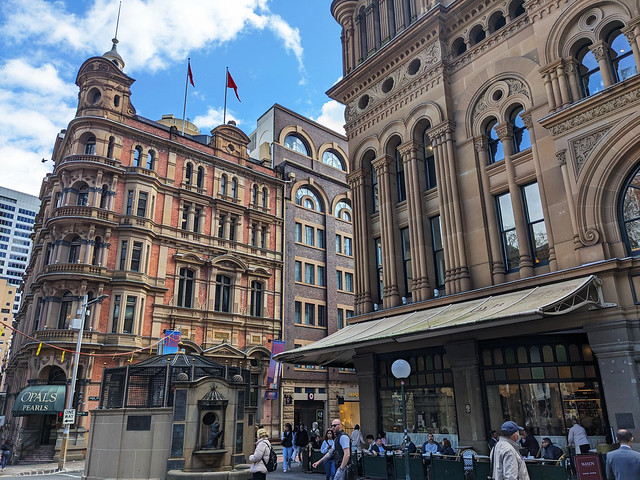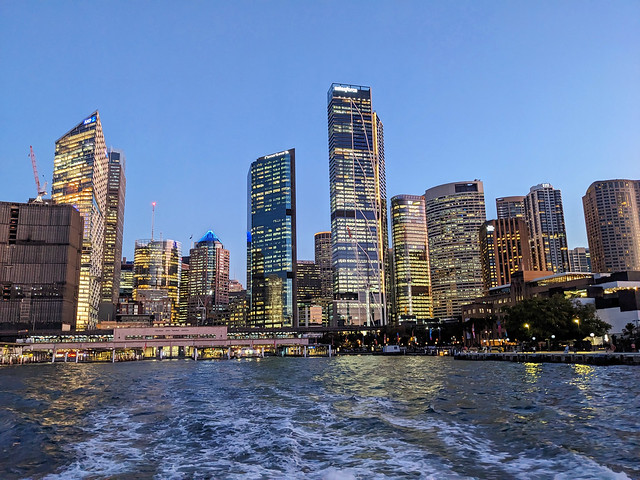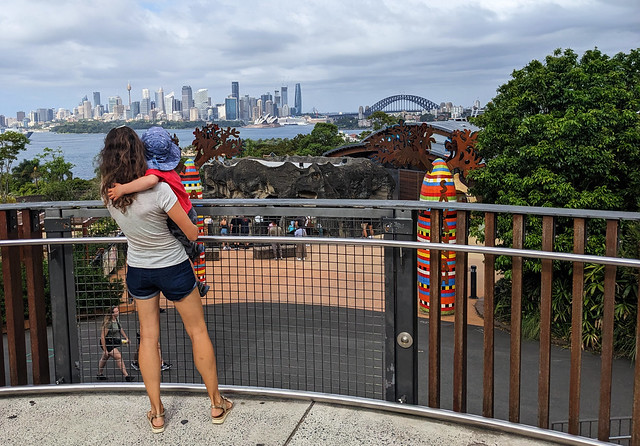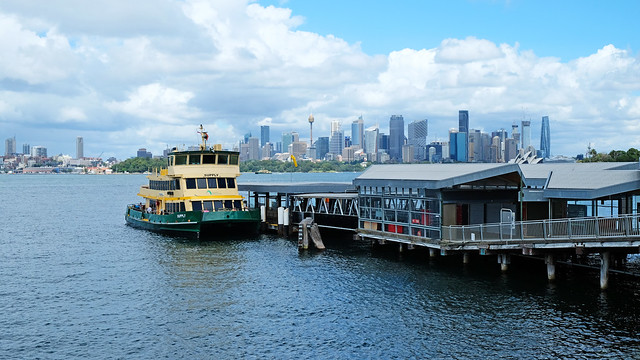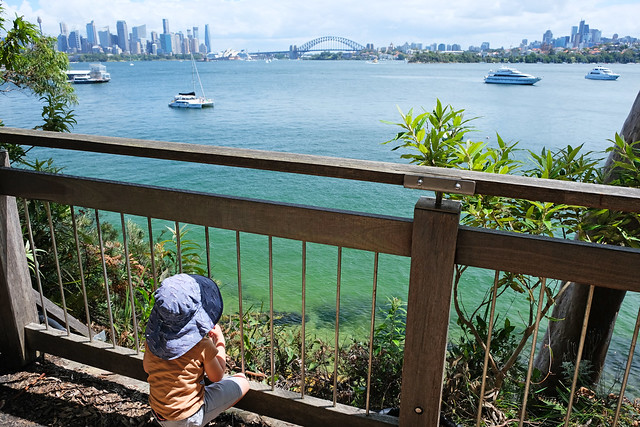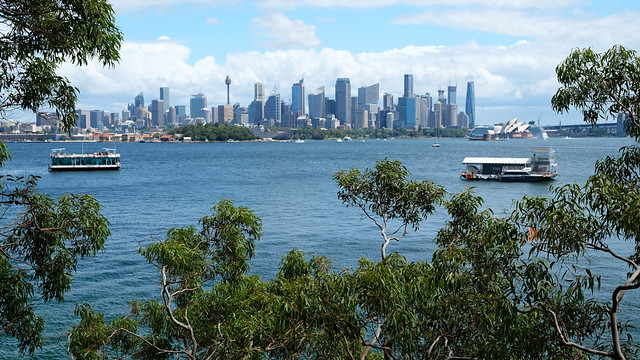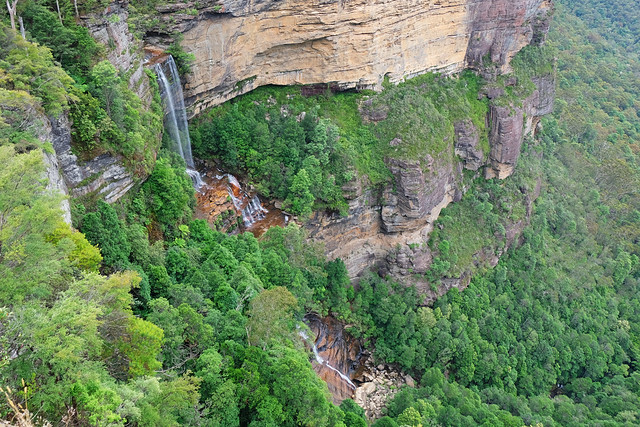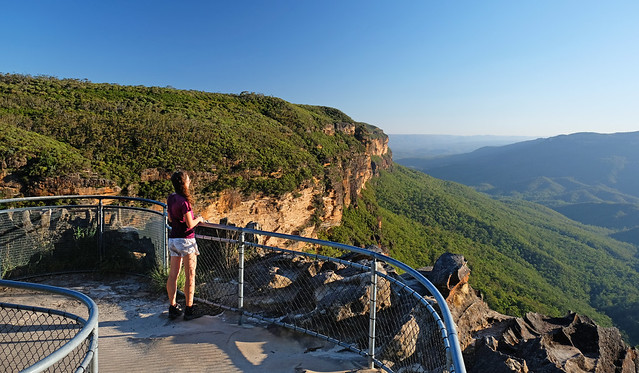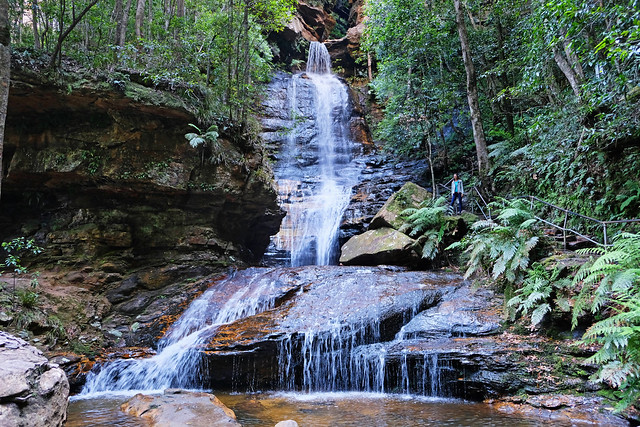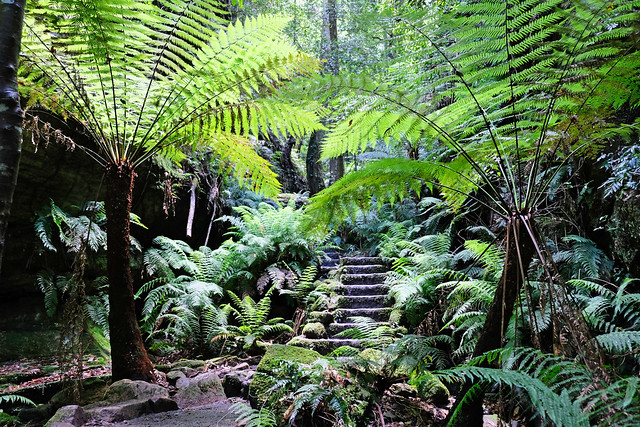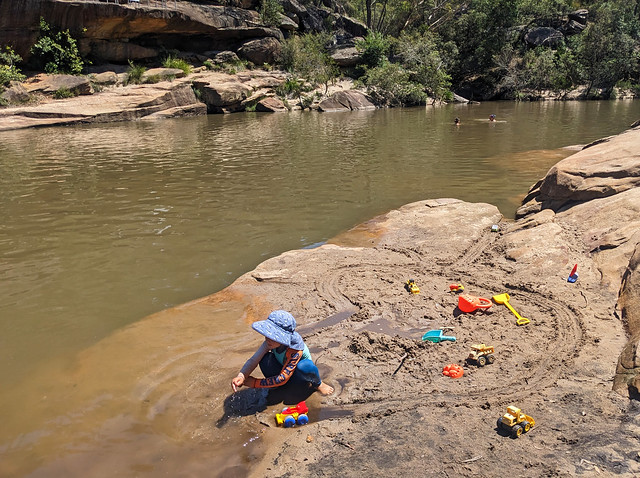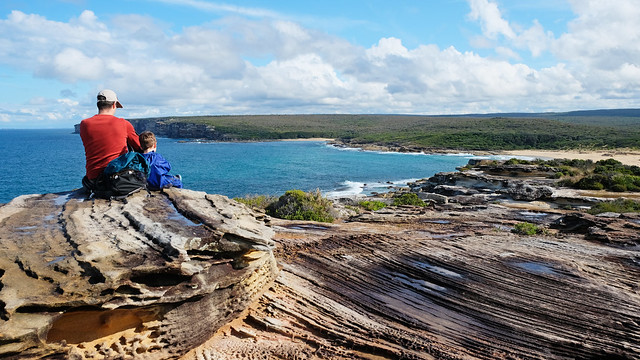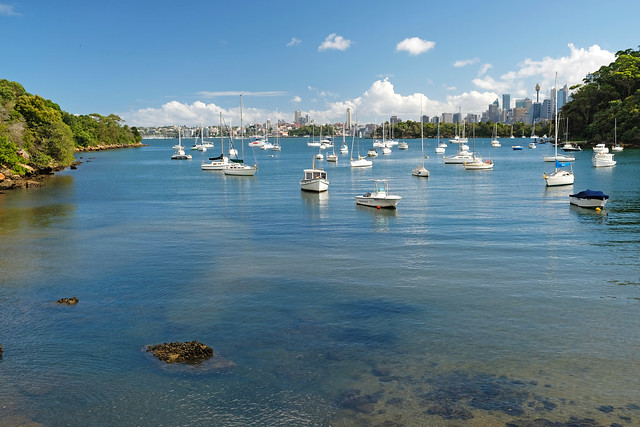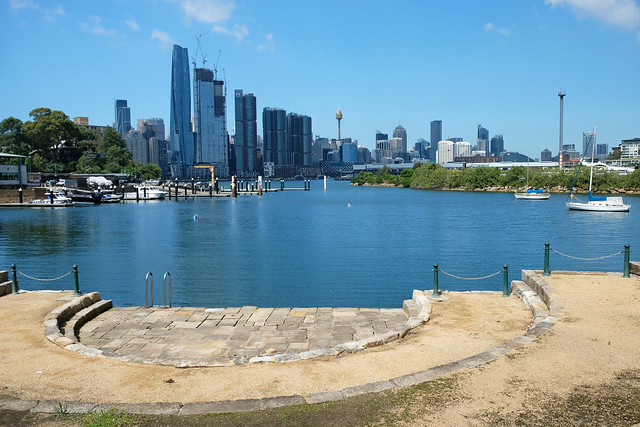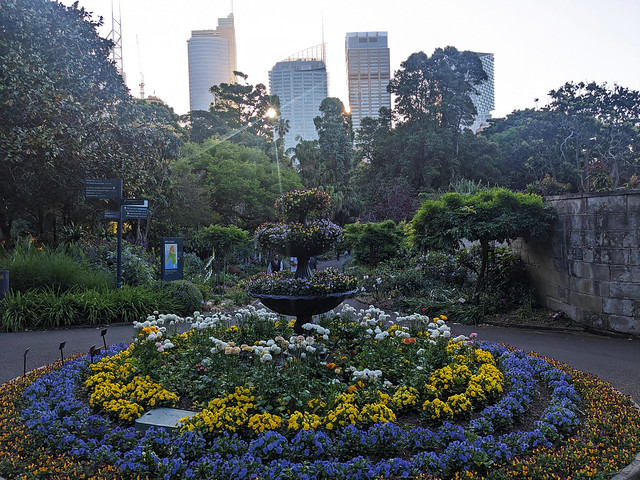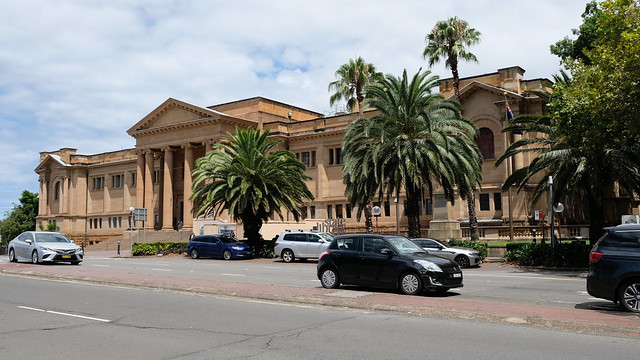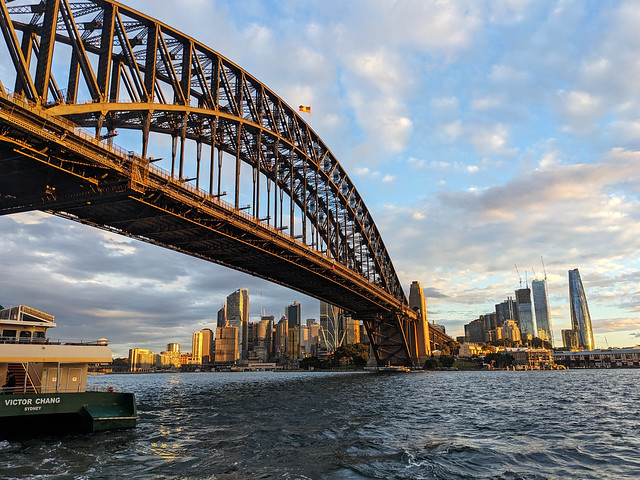Are you planning a trip to Sydney and wondering how many days you need? One thing is for sure: visiting Sydney is a highlight on any Australian itinerary. With harbor views and fabulous beaches, iconic landmarks, friendly locals and a truly Australian laid-back vibe, Sydney is one of a kind. It’s still hard to believe that we can call it our home, and we want you to love it as much as we do.
In this post we craft a Sydney travel itinerary that leaves you in awe, no matter the number of days you have. But, of course, time matters. You need time to experience this wonderful city, and we think that one week in Sydney is a great amount of time that allows you to see the highlights, visit the best beaches and coastal walks, and even explore some of the lesser-known Sydney attractions.
What if you don’t have 7 days in Sydney? We have suggestions for shorter Sydney itineraries at the end of this post. We recommend having at least 3 days in Sydney to make the most of your visit, and we have 3 days and 5 days Sydney itineraries. Ultimately, you mix and match your days as you like, while we give you ideas and tons of advice.
This Sydney 7 day itinerary was tested by us and our dear visitors, and we’ve been keeping it up to date ever since. So let’s see the very best places to visit in Sydney.
Overview: 7 days in Sydney itinerary
Best place to stay in Sydney:
- luxury: The Grace Hotel (4.5 stars, excellent location)
- mid-range: Cremorne Point Manor (scenic location, 10 minutes ferry ride from the CBD)
- budget: Nate’s Place Backpackers Sydney (hostel in Darlinghurst, a few blocks away from Kings Cross train station)
Here’s a quick overview of our detailed guide to visiting Sydney in 7 days:
Day 1: The Rocks, Circular Quay, Sydney Opera House, Royal Botanic Garden
Day 2: Bondi to Coogee Coastal Walk
Day 3: Sydney Harbour Bridge & Manly
Day 4: Darling Harbour, Chinatown & CBD
Day 5: Taronga Zoo & Bradleys Head
Day 6: day trip to the Blue Mountains
Day 7: day trip to the Royal National Park
The best active experiences in Sydney:
Day 1: The Rocks, Circular Quay, Sydney Opera House, Royal Botanic Garden
Your first day in Sydney is all about the world-famous landmarks and views: the Sydney Opera House, the Harbour Bridge and the stunning Sydney Harbour. They never get old, even if you live here.
Getting from Sydney Airport to the city
There’s a direct train from the domestic and international terminals of Sydney Airport to the city. It’s called the T8 line, and it takes you to the Central Station in about 15 minutes, or even further to Circular Quay. Depending on the time of your arrival, you might want to check in to your hotel first. Otherwise, Circular Quay is a great place to start your sightseeing in Sydney.
Paying for public transport can’t be easier: there’s no need to buy tickets or special cards, you can simply tap your bank card. You can choose to purchase an Opal Card to pay for public transport, but it works the same way as any credit card. Current changes and limits are applied to Opal Cards and credit cards in the same way. Discounts for kids and seniors can only be applied for Opal Cards though.
Morning: walk in The Rocks
In the shadow of the Sydney Harbor Bridge lies The Rocks, Sydney’s oldest neighborhood with colonial sandstone buildings, open-air markets, upscale restaurants and pubs. This was the place where the first convicts and drunk sailors settled down, and this is a unique and quite touristy neighborhood of modern Sydney.
Join a 90-minute guided walking tour of The Rocks so that you don’t miss some of the hidden alleyways and exciting stories of the early convict settlement era.
If you prefer a self-guided itinerary, start at the Rocks Discovery Museum in Kendall Lane. It’s a free museum set in a former sandstone warehouse. Check out their exhibitions, grab a map and go.
Enjoy Sydney Opera House views from the Hickson Road Reserve, then walk around the water to Campbells Cove where a row of old warehouses were turned into restaurants and shops. Get lost in the narrow laneways, like the Nurses Walk. Find Cadmans Cottage, the oldest house in Australia (some say, it’s only the second-oldest), built in 1816.
The Rocks will be a favorite of foodies, too. Taste the traditional Aussie beef burger, or choose an Irish pub or a fancy tea at The Tea Cosy. Pancakes on The Rocks spoils the sweet toothed, and La Renaissance has some of the best French pastries in Australia. Either way, have something to eat before you carry on to another iconic location…
Afternoon
As you walk further from The Rocks, you reach another old and iconic neighborhood:
Circular Quay
Circular Quay is the heart of Sydney. It’s the former working port, a transport hub and a heritage area. It’s where all the ferries of Sydney Harbour depart from, and it’s lively, buzzing and a bit touristy, as you might expect. But it charms you nevertheless.
Visit the Museum of Contemporary Art, hang out in First Fleet Park (enjoy the beautiful blooming jacarandas in late October), catch a scenic ferry ride from the Circular Quay ferry terminal, then walk further along the waterfront towards the Opera House.
Sydney Opera House
Marvel at the Sydney Opera House from every angle, and don’t be ashamed to take hundreds of pictures. Everyone does that. The best close views are from the Opera Bar and from the stairs. Take your time walking around the mighty sails. Then join a guided tour to see the interior and get the “behind the scenes”-look at the infrastructure.
Royal Botanic Garden
Walking in the heritage-listed, 30-hectare Royal Botanic Garden is one of the best free things to do in Sydney. It’s the oldest botanic garden in Australia, opened in 1816, and it’s among the best ones in the world. One of its entrances is right next to the Opera House, so this is a great place to take a stroll and watch the sunset after your first, action-filled day.
Walking all over this large botanic garden takes about half a day though, so don’t even try. Stroll the harbourfront walkway and enjoy the water views. Pick a few of the themed gardens (the Cacti and Succulent garden is our favorite!). Look up at the giant fig trees and other exotic tree species. The Royal Botanic Garden has an incredible selection of plants, from native Australian plants to palms, roses, herbs, tropical plants and cacti. Neither words nor pictures describe this place well enough, it’s definitely not just another nice city park, so make sure you leave some time to spend here – or return on another day.
You find maps at every gate, so you can plan a route based on the time you have. Check the opening hours, because it closes for the night, and it means quite early in the winter. There’s a restaurant, cafe, visitors center and a bookshop at the Palm Grove Centre.
On Fridays, Saturdays and Sundays you can join a free guided tour of the Government House. It’s first come, first serve, and we truly enjoyed the tour through the ceremonial rooms of this beautiful building. Otherwise the Government House is kept closed, it’s still the official residence of the Governor of New South Wales.
Day 2: Bondi to Coogee Coastal Walk
Your second day is about another iconic attraction, a true star on a 7 day Sydney itinerary: the Bondi to Coogee Coastal Walk. If you only choose one coastal walk in Sydney, let it be this one. It’s epic, even if you only complete a part of it. Very few of the large coastal cities in the world have such a wonderful, unspoilt coastline like Sydney, and this is your way to experience it.
The full route is 7.3 km, and it runs from Bondi Beach to Coogee Beach. It delivers the perfect Sydney experience: pretty, turquoise bays, giant waves, dramatic sandstone cliffs, golden beaches, handsome surfers and one of the strangest cemeteries you’ve ever seen. This walk makes you want to move to Australia right away (and I know what I’m talking about).
The Bondi to Coogee Beach Coastal Walk is a mix of a nature trail and an urban walk. Most of the path is paved or boardwalked, and you don’t need to be a hiker to do it, but you need to take steep sections of stairs. Lots of stairs.
You’ll pass Bondi Beach, Tamarama Beach, Bronte Beach, Clovelly Beach, Coogee Beach and Gordon’s Bay on the way. Stop at any of them for a swim. You won’t be able to resist cooling yourself down in the summer months, anyway. All beaches (except Tamarama Beach) have protected rock pools where you can swim if ocean conditions are too rough. You’ll also find parks, picnic tables and benches, kiosks, playgrounds and toilet blocks at each of these beaches.
Then there’s Waverley Cemetery, between Bronte Beach and Clovelly Bay. It’s a historical cemetery that overlooks the ocean, and the coastal walk runs on a very impressive boardwalk at the edge of the rock wall along the cemetery.
Bondi to Bronte walk: a shorter version
What if you can’t walk the roughly 7 kilometers from Bondi to Coogee? Just walk as much as you can, because this walkway is fabulous all the way. The most popular shorter section of the walkway is the Bondi to Bronte walk, which is ~2.5 km one-way. It includes Mackenzies Point, Tamarama Point, Tamarama Beach and Bronte Beach. Though it’s hard to choose the most picturesque section of such an amazing coastal path, you can’t go wrong with the Bondi to Bronte walk. (And I bet you wouldn’t miss Bondi Beach when visiting Sydney.)
Where to start the coastal walk?
You can start it anywhere, but the most suitable starting point depends on your time and mode of transport. If you stay in the Sydney CBD or the Eastern suburbs, I’d suggest accessing the Bondi to Coogee Coastal Walk by public transport.
The most straightforward starting point is Bondi Beach, and then you head south. If you walk all the way to Coogee Beach, it might seem a lot to walk back again. You don’t need to. You can use public transport to get back to Bondi Beach. It takes about 40 minutes to get from Coogee Beach to Bondi Beach by bus (two buses, with a change at Bondi Junction).
While Bondi Beach is quite easy to access from the city center by public transport, if you access the coastal walk by car, it’s not that ideal. Parking is both challenging and expensive at Bondi Beach. Clovelly Beach has a large, free parking lot (limited to 4 hours), and you find free on-street parking in the streets behind. Coogee Beach has a metered car park in front of Coogee Pavilion (at the northern end of Coogee Beach), but you can find free on-street parking if you’re lucky.
Day 3: Sydney Harbour Bridge, Manly
You’re not even surprised that the third day is still about some of the most iconic Sydney attractions. You’ll enjoy fantastic views again, this time from the Sydney Harbour Bridge, from the ferry to Manly and from the Sydney Tower Eye.
Morning: Sydney Harbour Bridge
Walking through the Sydney Harbour Bridge is free and fantastic. And I suggest starting it from North Sydney, because then you’ll face the best views all the way. If you stay in the CBD, simply take the ferry from Circular Quay to Milsons Point to get to the North Sydney side of the bridge. You’ll enjoy very scenic views on this short ferry ride.
When you reach Milsons Point, walk to the elevator near the crossing of Burton Street and Broughton Street (here, I marked it on the map for you). This elevator takes you up to the pedestrian walkway of the Sydney Harbour Bridge. The pedestrian path is on the eastern side, while the other side is reserved for bikers, and there’s a busy seven lane highway and train tracks in the middle.
Crossing the bridge is about 1.5 kilometers, with amazing views to the east: the Opera House and Sydney Harbour, the CBD skyline and Circular Quay. There’s a safety fence that somewhat obstructs your views, but I guess it’s there for a reason. This walk is still spectacular.
night views from the Harbour Bridge are also pretty
You can leave the bridge at several access points in The Rocks, but I suggest continuing until you reach the Circular Quay train station. This last section is along the Cahill Expressway, and it’s more beautiful than it sounds at first. Because walking along a busy road doesn’t sound too tempting, does it? But this elevated walkway offers the best views of Circular Quay and close views of the towering skyscrapers of the Sydney CBD. And your second reason not to miss the Cahill Walkway is getting to the ferry station at Circular Quay.
Afternoon: ferry to Manly
There’s no need to take a sightseeing boat trip in Sydney Harbour when the public ferries reward you with such stunning views. The ferry from Circular Quay to Manly has one of the best routes, and exploring Manly is a nice addition. But even if you don’t have much time to spend in Manly, the 30-minute ferry ride is the actual highlight here. Stay on the open deck and take in all the gorgeous views both ways.
Note that there are both public and private ferries that take you to Manly. Unless you need a bar on board, the public ferry is nice enough. It’s much cheaper and quite frequent. It arrives at Manly Wharf where you find lots of food and drinks, anyway. Grab a legendary bagel at Barrel One.
Manly is a typical beach neighborhood, one of those where people walk barefoot and with a towel in hand to have a quick swim after work. From the wharf you can walk on the Esplanade, then cross the tiny peninsula to get to Shelly Beach, an idyllic, protected cove. It’s ideal for a swim.
Evening: Sydney Tower Eye
Finally, end the day with another wonderful view: a 360-degree night panorama of Sydney from the 820 feet (250 meters) high Sydney Tower Eye Observation Deck. The viewing platform is fully enclosed, and you can book time slots for both day and night views.
Day 4: Darling Harbour, Chinatown & CBD
Your fourth day is about exploring the rest of Sydney’s center: Darling Harbour, Haymarket, Chinatown, Hyde Park and the Central Business District. There’s a lot of walking involved in this itinerary, and it’s a very enjoyable walk. But if you prefer exploring the sights by bus, there’s hop-on hop-off double-decker buses, with two different routes and about 30 optional stops.
Morning: Darling Harbour
Darling Harbour is a modern, lively waterside precinct on the western outskirts of the Sydney CBD. It’s pedestrian-friendly, family-friendly, full of museums, restaurants, bars, and it spoils you with countless more spectacular Sydney views.
You can easily get to Darling Harbour from either Circular Quay or the Central Station. The ferry from Circular Quay to Barangaroo is another scenic one, with great views of the Sydney Harbour Bridge, the CBD and Darling Harbour.
Barangaroo Reserve
Start your walk in the Barangaroo Reserve, a modern, sustainable waterside park that offers pretty views from the waterfront walkway and the upper terraces and lawns.
Barangaroo Wharf
The Barangaroo Reserve connects to the Barangaroo Wharf and King Street Wharf which are lined by a variety of restaurants and bars, and you’ll find even more of those when continuing along the Cockle Bay Wharf.
Madame Tussauds Sydney, SEA LIFE Sydney Aquarium and WILD LIFE Sydney Zoo are also at King Street Wharf, while the Australian National Maritime Museum is right across the bay. Part of the Maritime Museum is actually docked in the harbour where visitors can board the vessels. It’s a nice addition to your day if you have the time.
Pro tip: if you plan to visit more of the museums, consider a combined ticket to save money.
Pyrmont Bridge
And how to get to the Maritime Museum from King Street Wharf? Walk over Pyrmont Bridge. It’s one of the oldest electrically-operated wingspan bridges in the world, opened in 1902. Spanning over Cockle Bay for 369 meters, it’s a pedestrian bridge today, with wonderful views of Cockle Bay, Port Jackson and the CBD from above.
Tumbalong Park
Once you’ve taken all the pictures and got to the other side of the bridge, you can walk to the Australian National Maritime Museum, or skip the museum and head south towards Tumbalong Park. It’s a lovely green space with fountains and a huge adventure and water playground.
The entrance of the Chinese Garden of Friendship is just behind the park. It’s a tranquil garden full of pavilions, small waterfalls and ponds, winding paths, lush plants and a heritage-listed teahouse. It’s designed after ancient private gardens in China. There’s a small entrance fee, and it’s a quick, leisurely stroll, so it’s worth including in your self-guided Sydney walk.
Then continue on Tumbalong Boulevard, which offers a variety of dining options, and they’re more affordable than Cockle Bay or Barangaroo. The boulevard ends at Paddy’s Markets, which is a traditional market, full of budget-friendly food options.
The Goods Line
Before you throw yourself into the buzzing atmosphere of Haymarket and Sydney’s Chinatown, it’s worth taking a short detour to The Goods Line.
This is an abandoned railway track which was turned into a green walkway with large fig trees, nice flower beds, ping pong tables and benches. It connects Central Station and Darling Harbour.
Don’t miss the unique modern building of the Business School of the University of Technology Sydney, designed by Frank Gehry. I think it’s the highlight of this short walkway.
Afternoon
In the afternoon you continue your sightseeing stroll, and it’s time to see everything that didn’t fit before: Chinatown, Hyde Park and the main street of the CBD.
Chinatown
From The Goods Line walk back to Paddy’s Markets, then head to Dixon Street, a pedestrian street which is the heart of Chinatown, with Chinese paifang-style gates in the beginning and Asian grocers, noodle bars and fine-dining restaurants all along the street.
Haymarket became a center for the Chinese community living in the area, and it’s one of the best places in the world to eat authentic Chinese food – and try a variety of other Asian cuisines.
Campbell Street is known as Thai Town, while Pitt and Liverpool Streets is nicknamed Koreatown.
While on Campbell Street, don’t miss the heritage-listed historic building of the Capitol Theatre.
Hyde Park & St Mary’s Cathedral
Hyde Park is the oldest public park in Australia (you read it correctly, the name is the same as the one in London), and it’s a short walk away from Chinatown. Stroll under the giant fig trees (keep your eyes open for flying foxes around dusk), visit the Anzac Memorial in the southern end of the park and the Archibald Fountain in the northern area. With Gothic St Mary’s Cathedral in the background, you might feel you’re actually in England while standing at this majestic fountain, decorated with figures of the gods from Greek and Roman mythology.
You can visit St Mary’s Cathedral, too. It’s one of the largest churches in Australia, and entrance is free (they ask for a donation).
Central Business District
From St Mary’s Cathedral head to Sydney Town Hall. You’ll end your day in Sydney’s busiest street. George Street is the main street in the Sydney CBD, and it’s a long shopping street lined with hotels, restaurants, shops and arcades.
The Town Hall is an impressive, ornate Second Empire style late-nineteenth-century building, which was inspired by the Hôtel de Ville in Paris. Alongside it you’ll find St Andrew’s Cathedral and Queen Victoria Building, another heritage-listed one from the late 19th century, which is a five level shopping center today.
As you continue northwards, towards The Rocks, it’s impossible not to notice the other heritage-listed Victorian-style retail arcade, The Strand Arcade. You’ll look up quite often, anyway, as the surrounding buildings tower above you.
Keep your eyes open for a narrow side street called Angel Place. It has an interesting art installation, the Forgotten Songs. There are dozens of empty bird cages hanging above the street, and you can hear the songs of fifty birds. Songs that were once heard in central Sydney – before it became the busy place it is today.
George Street eventually leads you to Circular Quay. To get a fabulous night view of Sydney, take a ferry either to Milsons Point, Barangaroo or Pyrmont Bay.
Day 5: Taronga Zoo & Bradleys Head
Morning and early afternoon: Taronga Zoo
Taronga Zoo is not only a great option if you visit Sydney with kids, but it’s one of the best zoos in the world, which will fascinate adults, too. Located on the shores of Sydney Harbour, it offers stunning views of the Sydney CBD, and it’s a giant zoo with about 2600 animals of ~150 different species.
It has lots of exhibits that focus on Australia, and you can see dingos, emus, koalas, different species of kangaroos and wallabies, a platypus, a Tasmanian devil and many more iconic Australian animals. There are nature themed trails and daily keeper talks and presentations. It’s a full day activity to enjoy everything that Taronga Zoo offers.
And how to get to Taronga Zoo from the Sydney CBD? It’s part of the experience, because the ferry from Circular Quay to Taronga Zoo wharf is a very scenic ride. It’s only 12 minutes.
Late afternoon: Bradleys Head loop trail
You might spend your full day at Taronga Zoo. However, there’s a scenic harbourside nature walk that starts at the Taronga Zoo Wharf, and it’s worth doing if you have the time and energy. The loop trail around Bradleys Head is ~3 km, and it treats you with amazing views of Sydney Harbour, the Sydney skyline and the Opera House.
The path around Bradleys Head runs in a beautiful eucalyptus forest, but you get harbour views often enough. Along the way take the short detour via stairs to Athol Bay. It’s a tiny beach that faces the Harbour Bridge and the Opera House. In fact, it’s such a small patch of sand that it almost fully disappears at high tide.
Then walk towards Bradleys Head Lighthouse for more views of the Sydney Harbour and skyline. From then the trail continues on the other side of the headland. Just before you’d reach Taylor’s Bay (and the Taylor’s Bay track), there will be an ascending path with lots of stairs to your left, which makes the Bradleys Head walk a loop, taking you back to the beginning of the headland through Ashton Park.
Note: the trail around Bradleys Head is part of the Bondi to Manly walk, so if you have more time and want to walk more, you certainly have the chance. You can continue to Taylor’s Bay (there’s a short, steep pathway that gives access to the beach, too), then Chowder Head and Chowder Bay, and even further.
Bradleys Head Walk:
- Trailhead: Taronga Zoo Wharf
- Length: 3.2 km loop
- Difficulty: medium (lots of stairs along the way)
- See the Bradleys Head walking track on the map here.
Day 6: day trip to the Blue Mountains
Named after the blue haze created by the vast number of eucalyptus trees, the Blue Mountains show you a face of Australia which is very different from Sydney. The dense eucalyptus forests, deep valleys, rushing creeks and waterfalls and rugged landscapes are unspoilt and breathtaking – and typically Australian.
The most famous spot in the Blue Mountains is probably the Three Sisters rock formation. But you find countless scenic viewpoints right by the road: Lincoln’s Rock, Echo Point Lookout, Cahill’s Lookout and Boar’s Head Lookout (accessible from the same parking lot), Sublime Point Lookout – just to name a few in the Wentworth Falls – Katoomba area, which is home to the most popular attractions and provide lots of facilities for visitors.
Scenic World in Katoomba offers cable car rides and one of the steepest railways in the world so that you can marvel at the landscape from quite a unique perspective.
Rent a car vs sign up for a day trip
There are two options for a Blue Mountains day trip from Sydney. You can rent a car and drive there on your own, which means a more flexible itinerary and the option to visit sights more off the beaten track. It’s not necessarily expensive, especially if you choose a compact car and share the price with travel companions. The downside? You need to do the driving and the planning.
The other option is to sign up for a day trip, which means that your transport and itinerary is taken care of, the only thing you need to do is enjoy your day. With that said, an organized day tour is less flexible than any trip you organize for yourself, and it usually focuses on the most popular sights. But if you only have a day, you’ll likely only have time to visit the most popular sights, anyway.
This full day small group tour departs from Sydney (you can choose from 3 pickup locations), and it includes several stops in the Blue Mountains: Scenic World in Katoomba, Three Sisters, Megalong Valley, Leura and Jamison Valley. On your way back, you’ll also stop to visit Featherdale Wildlife Park, which is a nice little zoo full of Australian animals. Finally, you’ll end the day with a boat trip from Parramatta to Barangaroo.
The best way to experience the Blue Mountains: hiking
To breathe in the true atmosphere of this park, you need to take a hike, preferably a longer and not very busy one. You find countless hiking trails in the Blue Mountains, and their length and difficulty varies.
You can choose a day trip that includes a hike, like this one that takes you to Wentworth Falls. Or you fit several short and breathtaking hikes into your day if you drive to the Blue Mountains on your own. I’ll help you narrow down the choices. I brought you a list of our favorite hikes from several areas of this large national park:
Katoomba – Wentworth Falls area hikes
The hike that packs the most popular attractions and viewpoints:
- Prince Harry Cliff Walk from Katoomba Falls to the Three Sisters: 7.3 km return hike, which includes the track down to Katoomba Falls, several higher viewpoints of Katoomba Falls, passing Leura Cascades, and also part of the Prince Harry Cliff Walk to the Echo Point Lookout and the Three Sisters, with several panoramic lookouts along the way – see it on a map here
Other impressive hikes:
- Empress Falls: steep and strenuous, but only 1 km return hike to a spectacular waterfall, including Queen Victoria Lookout on the way
- Valley of the Waters Track: 3.5 km return hike, which includes Queen Victoria Lookout, Empress Falls and four more waterfalls in a dramatic valley
- Wentworth Falls & Grand Cliff Top Walk: a very scenic, but quite strenuous 2.6 km loop, which includes views of 187 meters high Wentworth Falls, Jamison Lookout, Wentworth Falls Lookout, Fletchers Lookout, Rocket Point Lookout, Princes Rock Lookout, and spectacular pathways under mossy cliff overhangs – see it on a map here
Blackheath area
The most spectacular canyon trail in the Blue Mountains:
- Grand Canyon Walk: 6 km loop that takes you down to the Grand Canyon among sandstone walls, rock overhangs, lush greenery, trickling water and small cascades; it includes lots of stairs getting down and up again at the end of the loop
Other impressive hikes:
- Lockleys Pylon walking track: 7.2 km relatively easy return hike that leads you on a scenic ridge, with impressive panoramic views on the way and at the lookout in the end; beautiful wildflowers in spring (from September to November)
- Victoria Falls walking track: 4 km steep return hike down to a pretty waterfall
- Hanging Rock: 8 km loop that includes the impressive sandstone formation called Hanging Rock as well as Baltzer Lookout
Glenbrook area
One of the best and most easily accessible swimming holes in the Blue Mountains:
- Blue Pool walking track: a short, 0.5 km return walk to a swimming hole with a rocky beach area – or nearby Jellybean Pool if you prefer a sandy beach
Other impressive hikes:
- Glenbrook Gorge track: challenging, 3 km return hike along a creek bed in the beautiful bushland (some rock-hopping included)
- Red Hands Cave walking track: 8 km loop to an Aboriginal art site
Important note: trails closures due to flooding and bushfires are common, and repairing damage might take a long time. Don’t forget to check current trail conditions and closures on the Blue Mountain National Park official website – here.
Day 7: day trip to the Royal National Park
views from Marley Head, a section from Wedding Cake Rock to Big Marley Beach
Royal National Park is among the oldest ones in the world and the first national park to be declared in Australia in 1879. Originally, it was simply called National Park, but it was renamed to Royal National Park after Queen Elizabeth II visited Australia in 1954.
It’s just an hour south of Sydney, and it has it all: sweeping coastal views from the dramatic clifftops, stunning beaches and wild swimming holes, sandstone rock shelves and rock pools, lush green, tranquil bushland and even patches of Gondwana Rainforest, the oldest rainforest in the world.
The best thing to do in the park is hiking the Royal Coast Track, spanning for 26 kilometers from Bundeena to Otford. You can easily split it into shorter chunks, but choosing the best section is challenging. The Bundeena to Wedding Cake Rock (5 km return), Wattamolla to Curracurrong Falls & Eagle Rock (8 km return) and the Wattamolla to Big Marley Beach (9 km return) are the most popular sections of the Coast Track.
Coast Track: view from the Wattamolla to Big Marley Beach hike
If you have time for a full day hike, our vote goes to the Wattamolla to Big Marley Beach hike, because our favorites vistas and two of the most beautiful, wild Sydney beaches are along this route. If you prefer a half-day hike, you can walk from Bundeena to Wedding Cake Rock, with several pretty lookouts on the way, and the interesting white rock formation that reminds you of a slice of cake at the end.
How to get there? Renting a car or signing up for an organized tour are your options. This tour gives you the chance to explore the park by hiking from Bundeena to Wedding Cake Rock, while also making short stops at Bald Hill Lookout, Wattamolla and the Sea Cliff Bridge. Finally, you’ll visit Symbio Wildlife Park to meet lots of adorable Australian animals.
Want to know all the details about the fascinating walks in the park? Read our detailed guide about Royal National Park here.
Shorter itinerary for Sydney
Don’t have 7 days to spend in Sydney? Mix and match your days.
Sample 3 days in Sydney itinerary:
- Day 1: The Rocks, Circular Quay, Sydney Opera House, Royal Botanic Garden
- Day 2: Bondi to Coogee Coastal Walk
- Day 3: Sydney Harbour Bridge, Darling Harbour, Chinatown & CBD
Sample 5 days in Sydney itinerary:
- Day 1: The Rocks, Circular Quay, Sydney Opera House, Royal Botanic Garden
- Day 2: Bondi to Coogee Coastal Walk
- Day 3: Sydney Harbour Bridge & Manly
- Day 4: Darling Harbour, Chinatown & CBD
- Day 5: day trip to either the Blue Mountains or Royal National Park
Stay connected in Sydney
Airalo sells eSIMs (digital SIM cards) that you can buy before you even land in Australia. It solves the pain of high roaming bills, and you don’t need to fuss about looking for a SIM card at the airport. Check the packages available for Australia here.
The best time to visit Sydney
Sydney is one of those places which are great to visit any time of the year. It has a mild climate, summers are warm and partly cloudy and the winters are short, cool, and mostly clear. Temperature varies from 8°C to 27°C throughout the year. The best time to visit depends on the activities you’d like to enjoy.
Before giving an overview of the seasons, let me remind you that Australia is in the southern hemisphere, so the seasons are exactly the opposite to what most of us are used to. (I’m still confused about what I mean by “winter” or “spring” since we moved here.) So let’s see.
Sydney in spring
Spring is from September to November. It has lovely weather for outdoor activities, with mild temperatures ranging from 15°C to 25°C (59°F to 77°F). Blooming flowers are beautiful, and late October and November is jacaranda blooming, which is spectacular in lots of Australian cities and towns, Sydney included.
Spring in Sydney is an excellent season for sightseeing, hiking and road tripping. Sea temperature is around 18-19°C, which is not what I’d call pleasant, but that won’t hold most of the locals back on a warm, sunny day.
Sydney in summer
Summer in Sydney is from December to February. Temperature is warm or hot, with average highs ranging from 26°C to 31°C (79°F to 88°F). But Sydney also gets a significant amount of its yearly rainfall throughout the summer, mainly in the form of dramatic thunderstorms. On clear days though it would feel like the sun is baking you alive. Don’t ever forget about sun protection when you go outside.
Sea temperature is around 21-23°C, which is as warm as it gets, so this is definitely the best time for beach holidays. It’s also the peak tourist season, probably because the rest of the world is trying to escape winter.
Honestly, summer is probably my least favorite season in Sydney – which is a surprise to me, too, since I’ve been a summer person all my life. But lots of summer days are just too hot to do anything other than chilling out on the beach, and the rest of the year is very pleasant. If you’re planning sightseeing or hiking days, or a longer road trip along the coastline, I recommend spring or autumn.
Sydney in autumn
Autumn in Sydney is from March to May. Temperatures are similar to spring, ranging from 14°C to 24°C (57°F to 75°F), making it a pleasant season for various kinds of outdoor activities. Since sea temperatures are warmer after the summer months (20-23°C), it’s an ideal time to combine beach activities with sightseeing and road tripping. It’s also quieter than the summer.
Since most Australian plants are evergreen, don’t expect autumn colors and fallen leaves. Autumn in Sydney feels more like a second spring.
Sydney in winter
Winter in Sydney is from June to August. While Sydney winters are mild, with temperatures ranging from 8°C to 17°C (46°F to 63°F), we never felt as cold indoors as before. Since not much effort is put into isolating and heating houses, we realized that apartments are much colder than what we experienced during either European or Canadian winters.
It’s still usually pleasant spending time outdoors. Actually, outdoor temperatures on a sunny day can be more pleasant than indoor temperatures in your apartment. We like walking on the unshaded coastal trails and soaking up the sunshine in winter. The sun has warmth, but it’s not as harsh as in the rest of the year.
If you visit Sydney as a tourist and plan to spend your days outdoors, going to places, doing things and staying active, winter is still a good time to visit. Bring a warm sweater and a good windbreaker, maybe a light winter coat (nothing like the ones we wear during European winters though) for the cooler and more windy days.
My favorite resources to make your travel planning easier and more affordable:
- Booking.com: book rooms, apartments, hostels or hotels for your stay.
- Hipcamp: book a campsite or cabin in a private campground or caravan park.
- DiscoverCars: compare rental car prices to find the best deal.
- Airalo: get an eSIM (digital SIM cards) that you can buy before you even land in Australia. It solves the pain of high roaming bills, and you don’t need to fuss about looking for a SIM card at the airport.
Have you been to Sydney? What are your favorite things to do in Sydney?


